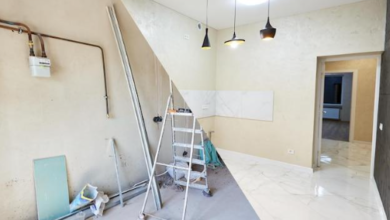Close Your Eyes And Slowly Take Three Deep Breaths

Close your eyes and slowly take three deep breaths. It’s a simple action that holds profound benefits for your physical and mental well-being. In today’s fast-paced world, where stress and distractions seem to be constant companions, the power of deep breathing and eye closure cannot be underestimated. In this article, we’ll explore the science behind deep breathing, learn various techniques, understand the advantages, and delve into the significance of closing your eyes for better focus. So, sit back, relax, and let’s dive into the world of breath and mindfulness.
In addition to the benefits of deep breathing and eye closure, incorporating a QR code meditation app into your routine can further enhance your mindfulness practice.
Introduction
In our busy lives, it’s easy to get caught up in the chaos and forget to pause, take a breath, and reset our minds and bodies. Deep breathing offers a simple yet effective way to do just that. By intentionally taking deep breaths, we can activate the body’s relaxation response, reduce stress levels, and increase overall well-being. Similarly, closing your eyes can help you find inner peace, shut out external distractions, and enhance concentration. Let’s explore these practices further and discover how to incorporate them into your daily routine.
The Science behind Deep Breathing
Breathing is an automatic process that we rarely pay attention to. However, understanding its mechanisms can deepen our appreciation for the power of deep breathing. When you take a deep breath, you engage the diaphragm, a dome-shaped muscle below the lungs. This muscle contracts and moves downward, allowing the lungs to expand. As you exhale, the diaphragm relaxes, pushing air out of the lungs. This process not only supplies oxygen to your body but also aids in eliminating carbon dioxide.
Techniques for Deep Breathing
- Diaphragmatic Breathing:
- Find a comfortable position and place your hands on your belly.
- Breathe in deeply through your nose, allowing your belly to rise.
- Exhale slowly through your mouth, feeling your belly lower.
- Repeat this process for several minutes, focusing on the sensation of your breath.
- Box Breathing:
- Imagine a square divided into four equal sides.
- Inhale deeply for a count of four.
- Hold your breath for a count of four.
- Exhale slowly for a count of four.
- Hold your breath again for a count of four.
- Repeat this pattern several times, following the shape of the imaginary box.
- 4-7-8 Breathing:
- Close your eyes and take a deep breath in through your nose for a count of four.
- Hold your breath for a count of seven.
- Exhale slowly through your mouth for a count of eight.
- Repeat this cycle three more times, letting each breath become slower and more effortless.
- Alternate Nostril Breathing:
- Sit comfortably and close your eyes.
- Place your right thumb on your right nostril to close it.
- Inhale deeply through your left nostril.
- Use your ring finger to close your left nostril.
- Exhale slowly through your right nostril.
- Continue this pattern, alternating nostrils with each breath.
Benefits of Deep Breathing
Deep breathing offers a myriad of benefits for both your physical and mental health. Let’s explore some of the advantages that regular deep breathing practice can bring to your life:
Reduced Stress and Anxiety
Stress and anxiety are all too common in today’s society. However, deep breathing can be a powerful tool to help alleviate these pressures. When you take slow, deliberate breaths, you activate the parasympathetic nervous system, triggering a relaxation response. This response counters the “fight-or-flight” mode, reducing stress hormone levels and promoting a sense of calm.
Improved Focus and Concentration
In our increasingly distracted world, cultivating focus and concentration can feel like a challenge. By incorporating deep breathing into your routine, you can enhance your ability to concentrate. When you take a moment to close your eyes and take a few deep breaths, you bring your attention back to the present moment, improving your focus on the task at hand.
Enhanced Relaxation and Sleep Quality
Do you struggle with unwinding after a long day? Deep breathing can be a valuable ally in achieving relaxation and better sleep. By practicing deep breathing exercises before bedtime, you signal to your body and mind that it’s time to wind down. This can help you enter a state of relaxation, leading to improved sleep quality and more restful nights.
Boosted Immune System
Believe it or not, deep breathing can also positively impact your immune system. When you breathe deeply, your lymphatic system is stimulated, promoting the removal of toxins and waste products from your body. Additionally, deep breathing helps oxygenate your blood, improving circulation and enhancing the overall functioning of your immune system.
Incorporating Deep Breathing into Daily Routine
Now that we understand the benefits of deep breathing, let’s explore some ways to incorporate it into your daily routine:
Morning and Evening Deep Breathing Exercises
Kickstart your day by dedicating a few minutes to deep breathing. Find a quiet spot, close your eyes, and take several deep breaths. Set positive intentions for the day ahead as you focus on your breath. Similarly, before you go to bed, wind down with a calming deep breathing session. This will help you release any accumulated tension and prepare your mind and body for a restful sleep.
Deep Breathing during Stressful Situations
When faced with stressful situations, deep breathing can be your secret weapon. Whenever you feel overwhelmed, take a moment to pause, close your eyes if possible, and take several deep breaths. This practice will help you regain control of your emotions and approach the situation with a calmer perspective.
Using Breathwork during Meditation or Yoga Sessions
Deep breathing and meditation go hand in hand. Incorporating breath-focused meditation into your practice can deepen your mindfulness experience. Whether you’re practicing traditional seated meditation or engaging in a yoga session, consciously breathing deeply will enhance your mind-body connection and enrich your practice.
Tips for Effective Deep Breathing
To make the most of your deep breathing practice, consider the following tips:
Find a Quiet and Comfortable Space
Creating a conducive environment is crucial for successful deep breathing. Find a quiet space where you can sit or lie down comfortably. Minimize distractions and ensure you won’t be interrupted during your practice. This will allow you to fully immerse yourself in the experience.
Practice Deep Breathing Regularly
Like any skill, deep breathing improves with regular practice. Aim to incorporate deep breathing exercises into your routine daily, even if it’s just for a few minutes. Consistency is key, and over time, you’ll notice the cumulative benefits of this practice.
Combine Deep Breathing with Positive Affirmations or Visualization
To amplify the effects of deep breathing, consider pairing it with positive affirmations or visualization. As you inhale deeply, mentally repeat affirmations that resonate with you. Alternatively, visualize yourself in a serene and peaceful setting, allowing the breath to anchor you to that state of tranquility.
Closing Your Eyes for Better Focus
In addition to deep breathing, closing your eyes can be a powerful tool to enhance your focus and concentration. Our eyes are constantly bombarded with visual stimuli, which can be overwhelming and distracting. By closing your eyes, you create a shield against external distractions, allowing your attention to turn inward.
Incorporating Eye Closure into Daily Routine
You can harness the benefits of eye closure by incorporating it into your daily routine:
Using Eye Closure during Relaxation Exercises
Whether you’re engaged in a guided relaxation exercise or practicing meditation, closing your eyes helps you disconnect from the outside world and turn your focus inward. By shutting out visual distractions, you create an environment conducive to deep relaxation and inner exploration.
Closing Your Eyes to Visualize Goals and Intentions
Visualization is a powerful technique for manifesting your goals and intentions. By closing your eyes and vividly imagining your desired outcomes, you tap into the power of your subconscious mind. This practice helps align your thoughts, beliefs, and actions with your aspirations, increasing the likelihood of success.
The Power of Mind-Body Connection
The connection between deep breathing and eye closure lies in their ability to harness the mind-body connection. Deep breathing slows down the breath, which in turn signals the brain to activate the relaxation response. Closing your eyes further enhances this process by directing your attention inward, minimizing external distractions, and promoting a state of heightened focus and relaxation.
By combining deep breathing and eye closure, you create a harmonious synergy that nurtures your overall well-being. This synergy allows you to tap into your inner resources, reduce stress, and enhance your capacity for presence and clarity.
Conclusion
In a world filled with constant distractions and mounting stress, taking a moment to close your eyes and take three deep breaths can be a transformative practice. Deep breathing and eye closure offer a sanctuary of calm amidst the chaos, allowing you to nurture your mind, body, and spirit. By incorporating these practices into your daily routine, you can experience reduced stress levels, improved focus, enhanced relaxation, and a stronger mind-body connection. So, the next time you feel overwhelmed, remember to close your eyes, take a deep breath, and embrace the power of the present moment.
FAQs
Q: Is deep breathing suitable for everyone?
A: Yes, deep breathing is suitable for almost everyone. However, if you have a respiratory condition or any concerns about your breathing, it’s best to consult with a healthcare professional before starting a deep breathing practice.
Q: How long should I practice deep breathing?
A: The duration of your deep breathing practice can vary depending on your preference and schedule. Starting with a few minutes per day and gradually increasing the duration is a good approach. Consistency is key, so aim to practice deep breathing regularly.
Q: Can eye closure help with insomnia?
A: Yes, closing your eyes can be beneficial for those experiencing insomnia. By shutting out visual stimuli and promoting relaxation, eye closure can help create a conducive environment for sleep. Pairing it with deep breathing exercises can further enhance its effectiveness.
Q: Are there any risks associated with deep breathing?
A: Deep breathing is generally safe for most individuals. However, if you experience dizziness, shortness of breath, or any discomfort during deep breathing exercises, it’s advisable to stop and consult with a healthcare professional.
Q: Can deep breathing and eye closure be used together?
A: Absolutely! Deep breathing and eye closure complement each other beautifully. Combining these practices can enhance relaxation, promote focus, and deepen the mind-body connection. Experiment with different combinations and find what works best for you.




